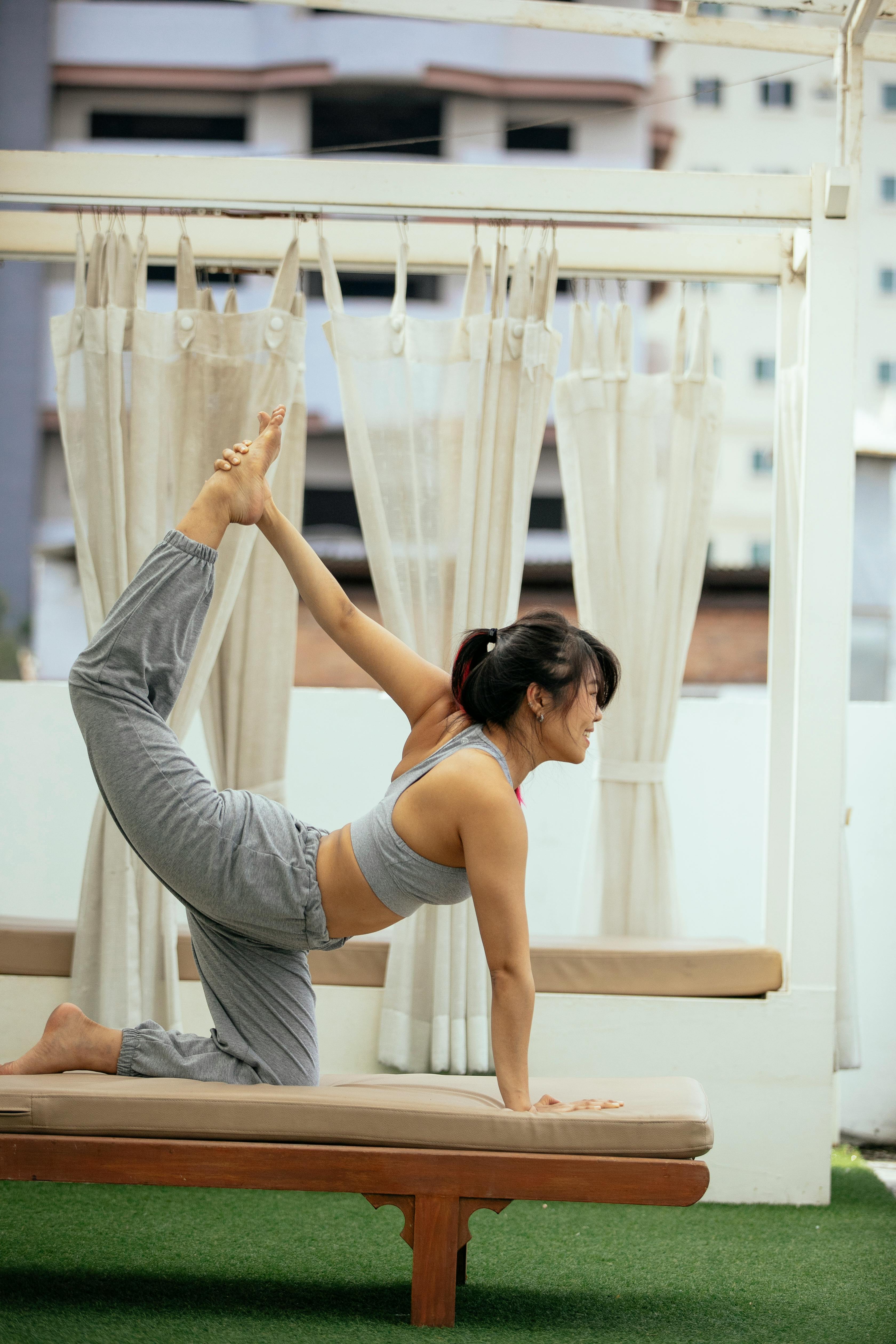Mastering the Pigeon Pose (Eka Pada Rajakapotasana): Techniques, Variations, and Benefits

Introduction
The Pigeon Pose, or Eka Pada Rajakapotasana, is a popular yoga posture that provides deep stretching and numerous physical and mental benefits. This blog will guide you through the steps to correctly perform the Pigeon Pose, explore its variations, adapt it for different levels of flexibility, and highlight its advantages for both body and mind.
Step-by-Step Guide to Pigeon Pose
1.Starting Position
- Begin in a tabletop position with your hands and knees on the mat.
- Bring your right knee forward and place it behind your right wrist. Your right shin can angle back towards your left hip.
- Extend your left leg straight back, keeping your hips square to the front of the mat.
2.Positioning the Hips
- Ensure your hips are squared and facing forward. Use a block or folded blanket under your right hip if it doesn't reach the floor.
- Flex your right foot to protect the knee.
3.Lowering the Torso
- Slowly lower your torso over your right leg. You can stay on your hands, come down to your forearms, or extend your arms fully and rest your forehead on the mat.
- Keep your left leg extended and the top of your left foot pressing into the mat.
4.Holding the Pose
- Hold the pose for 5-10 deep breaths. Focus on relaxing your hips and breathing deeply.
- To release, push through your hands, lift your hips, and return to the tabletop position. Repeat on the other side.
Variations for Different Levels of Flexibility
1.Beginner Variation
- Use a block or blanket under the hip of your bent leg to provide support.
- Keep your hands on the mat and maintain an upright torso to reduce intensity.
2.Intermediate Variation
- Lower your torso to your forearms, deepening the stretch in your hips and glutes.
- Experiment with inching your back leg further back to increase the stretch.
3.Advanced Variation
- From the forward fold, bend your back knee and reach back with your opposite hand to grab your foot or ankle.
- For a more intense stretch, use both hands to reach back and hold your foot, opening your chest towards the sky.
Adapting the Pose for Different Levels of Flexibility
- Tight Hips: Place a block or blanket under the hip of your bent leg to prevent discomfort and maintain alignment.
- Knee Pain: Keep your front foot closer to your body, reducing the angle of your shin to decrease pressure on the knee.
- Advanced Practitioners: Deepen the pose by extending your back leg further and folding your torso lower over your front leg.
Physical Benefits
- Hip Flexibility: Stretches the hip flexors, glutes, and piriformis muscle, improving hip flexibility and mobility.
- Spine Alignment: Helps to align and lengthen the spine, reducing back pain and improving posture.
- Digestive Health: Stimulates the digestive organs, aiding in digestion and detoxification.
Psychological Benefits
- Stress Relief: Deep stretching in Pigeon Pose releases tension stored in the hips, promoting relaxation and stress relief.
- Emotional Release: The pose can help release stored emotions, leading to a sense of emotional balance and well-being.
- Mindfulness and Focus: Holding the pose encourages deep breathing and mindfulness, enhancing concentration and mental clarity.
Conclusion
The Pigeon Pose (Eka Pada Rajakapotasana) is a powerful yoga posture that offers a range of physical and mental benefits. By following the step-by-step guide, exploring variations, and adapting the pose to your flexibility level, you can safely and effectively integrate Pigeon Pose into your yoga practice. Remember to listen to your body and use props as needed to maintain alignment and prevent injury.
For more tips on yoga and to explore our range of yoga mats and accessories, visit our website Sportive Lives. Embrace the journey of mastering Pigeon Pose and enjoy the profound benefits it brings to your practice and well-being.
Copyright Notice
Some of the images used in this blog are from the Internet and are for sharing and learning only. The copyright belongs to the original author. If you think that our use infringes your copyright, please contact us in time, and we will delete the relevant content as soon as possible. Thank you for your understanding and support.
Article Source: www.sportivelives.com



Leave a comment
All comments are moderated before being published.